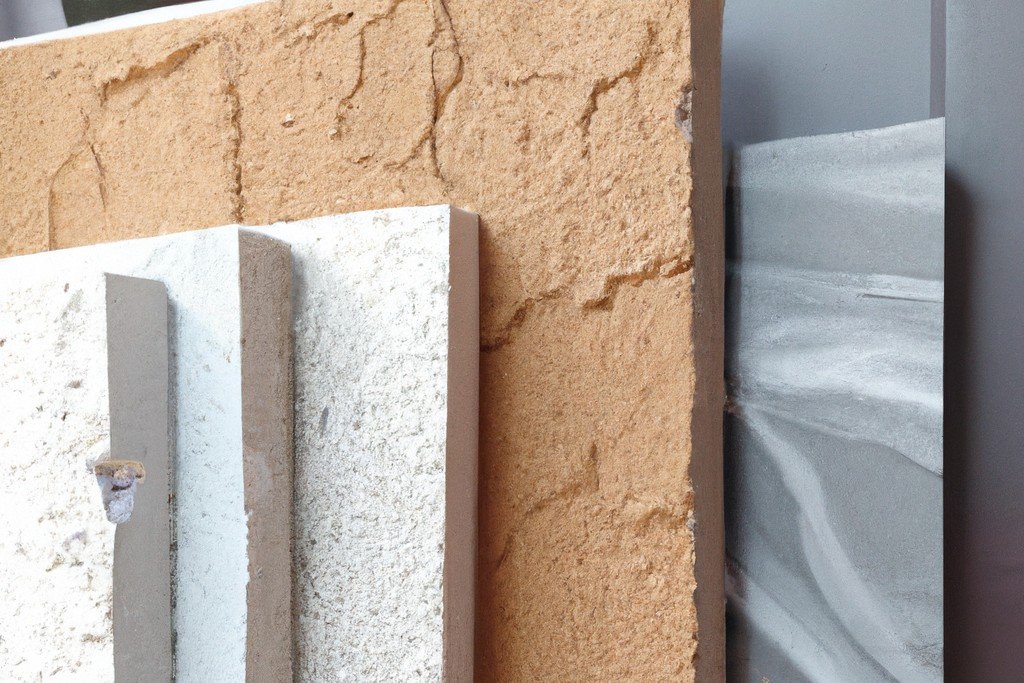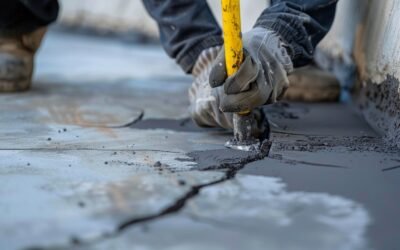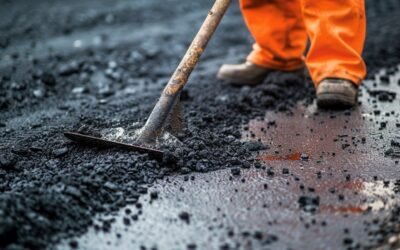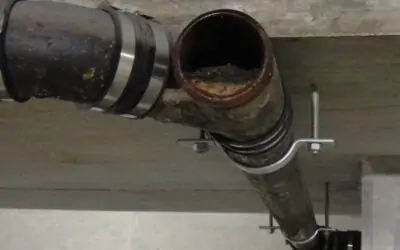Drywall can be the perfect finishing for your home. It’s easy to install and it gives your home that polished look. However, over time drywall can be vulnerable to bumps and scrapes that can leave your walls damaged. Things such as furniture being moved, kids playing, foundation settling, and moisture can all be hazards when it comes to damaging drywall. Luckily drywall can be easily repaired. Whether it’s a small crack, larger hole, or needs to be replaced completely, there are a few options you might want to know before getting started on your repairs.
Table of Contents
Types of Drywall
When choosing drywall for your home, there are a few options available. Some have unique qualities that improve resistance. Depending on the climate where you’re building, there might be drywall that’s best tailored to your needs:
Standard drywall
Standard drywall is the most common type of drywall used in homes. It can also be referred to as white board. It’s made of gypsum and paper and it’s easy to work with. Standard drywall is best used in rooms that aren’t too humid, like bedrooms and living rooms. It’s also the most cost-efficient because it has no special features.
Plasterboard
Plasterboard is used for projects that require veneer plastering because plasterboard is used as the backing when finishing your walls with veneer plaster. Plasterboard is not meant for mudding and taping, though veneer plaster is a similar finish as mud and tape, it does not require as many steps and can look equally as esthetic. Plasterboard is also referred to as blue board and has special qualities that absorb moisture. This makes it the perfect drywall to use in rooms that acquire a lot of moisture such as bathrooms.
Soundproof drywall
Soundproof drywall is made of gypsum and fiberglass. It’s designed to help reduce sound transmission between rooms. It’s a great option for rooms that need extra noise reduction, like bedrooms and home theaters.
Fire-resistant drywall
Otherwise known as Type X drywall this drywall has extra fire resistance. It’s made of gypsum and reinforced with fiberglass mats. This type of drywall is used in homes, apartments, and commercial buildings where there’s a risk of fires. It can be installed in multiple layers to improve fire resistance.
Mold-resistant drywall
This is the best drywall for any areas that contain a lot of moisture. Mold-resistant is generally sold as green drywall or purple drywall. While both are not 100% waterproof, they are both water resistant. Purple drywall is the more resistant of the two. Purple drywall is also environmentally friendly and made from recycled paper. Green drywall is made of gypsum and paper but has a wax coating for water resistance.
Drywall thickness
There are different thickness levels when it comes to drywall. The most common thickness for home use is ½ inch, but there are other options starting from ¼ inch to ⅝ inch. The thicker the drywall, the more soundproofing and fire resistance it offers. Thinner drywall can be used for detailing such as curved walls as it can be easily manipulated when it’s being installed.
Drywall Repair
If you have damaged drywall, it’s important to repair it as soon as possible. Smaller cracks can be repaired with a drywall compound. Larger cracks might require a piece of drywall to be cut and placed over the crack. If there is extensive water damage, drywall will need to be replaced.
Patching drywall
Patching drywall is a common repair that can be done quickly. It’s easy to do and only requires a few materials.
To patch a hole in drywall, you’ll need:
- A piece of drywall that’s the same thickness as the wall
- Utility knife
- Tape measure
- Circular saw
- Rasp
- Paintable caulk
- Paintbrush or roller
How to patch drywall
- Measure the hole and cut a piece of drywall that’s the same size.
- Use a utility knife to cut the drywall around the hole. Make sure to cut it slightly smaller than the hole so it fits snugly.
- Tap the drywall into the hole until it’s flush with the wall
- Use a rasp to file down any rough edges on the patched hole until it’s smooth.
- Apply paintable caulk around the edge of the hole using a brush or roller
- Let the caulk dry and then paint over it to match the surrounding wall.
Fixing cracks in drywall
Fixing cracks in drywall is another common repair. Cracks can happen for a number of reasons, such as settling foundation or even just wear and tear. Whatever the reason, it’s easy to fix a crack in drywall.
What you’ll need to fix a crack in drywall:
- A putty knife
- Fine-grit sandpaper
- Paintable caulk
- Paintbrush or roller
How to fix a crack in drywalll
- Use a putty knife to fill the crack with paintable caulk
- Smooth out the caulk using the putty knife. Make sure the caulk is flush with the wall.
- Let the caulk dry and then sand it down until it’s smooth.
- Paint to finish
Water damage
Drywall is often damaged by water leaks, which can cause the drywall to buckle and warp. If left untreated, the water damage can eventually lead to mold and mildew growth. So it’s important to fix any damage to your drywall as soon as possible.
If there is a small patch that has been absorbing water, you can repair it by patching the drywall. If the leak has spread, you’ll want to replace the wall entirely with a new sheet of drywall. This can be done by removing the wall or ceiling and installing drywall.
Poor installation
Sometimes drywall is damaged not because of an accident or water leak, but because it wasn’t installed properly. If your drywall wasn’t installed correctly, it can start to sag or crack. The best way to fix this is to hire a professional to re-install the drywall. They will be able to advise you on the best type of drywall for your needs and ensure that it’s installed correctly for a longer-lasting finish.
Drywall Finishing
Once the drywall is installed there are a few final steps to take before the project is complete. How you finish your drywall depends on how you want the end result to look.
Mud and tape drywall
Mudding and taping is the most common way to finish drywall. It’s a multi-step process that involves applying joint compound to the seams between the drywall sheets, then covering the joints with tape. Once the joint compound dries, it’s sanded smooth and another layer is applied. This process is repeated until the seams are completely covered and the surface is smooth.
Sand and paint
This is the second step if you choose to finish your walls with mud and tape or if you’re finishing a patch or crack repair. Because the compound used to seal holes will dry to a different sheen than the rest of the wall, it needs to be sanded until it’s flush with the wall. Once it’s sanded, you can apply paint or another finish of your choice.
Textured drywall
Textured drywall is a popular finish for walls and ceilings. It can be done by hand or with a machine and there are many different types of textures to choose from. Some of the most popular textures include orange peel, knockdown, and popcorn.
Veneer plaster
Veneer plaster is a type of plaster that’s applied over drywall. It’s a thin layer of plaster that dries quickly and doesn’t require sanding. Veneer plaster can be textured or smooth and it can be painted any color.
Wall Mounts
Wall mounts are a great way to secure your TV, other electronics, or furnishing to the wall. They provide a stable base and can prevent damage to your walls. However, installing wall mounts to drywall can be tricky. Drywall does not have the capacity to hold heavy objects and you’ll need to use a stud finder to locate the studs in the wall. Once you know where the studs are, you can mark the location and drill pilot holes.
Drywall contractors
If you’re not comfortable repairing or installing drywall yourself, you’ll want to find a quality drywall contractor near you. A good contractor will be able to install, repair, and finish your drywall to your specifications. Here are a few tips to make sure your contractor has the required experience.
Licensing and Insurance
The first thing you should look for when hiring a contractor is proof of licensing and insurance. In addition, they should have insurance that covers any damage they may cause to your property.
Contract in writing
Before any work begins, you should have a contract in writing that outlines the scope of work to be done, the materials to be used, and the price. This will protect you in case there are any disagreements about the work or the cost.
Ask multiple quotes
When you’re comparing contractors, be sure to get multiple quotes. This will give you a better idea of the market rate for the work you need to be done.
If you’re ever in doubt about what to do if your drywall is damaged, don’t worry! You can always call City Wide. We have a team of experienced drywall repair experts who can help you get your walls looking good as new again. We’ll work with you to find the best solution and we’ll make sure the job is done right, on time, and on budget.







